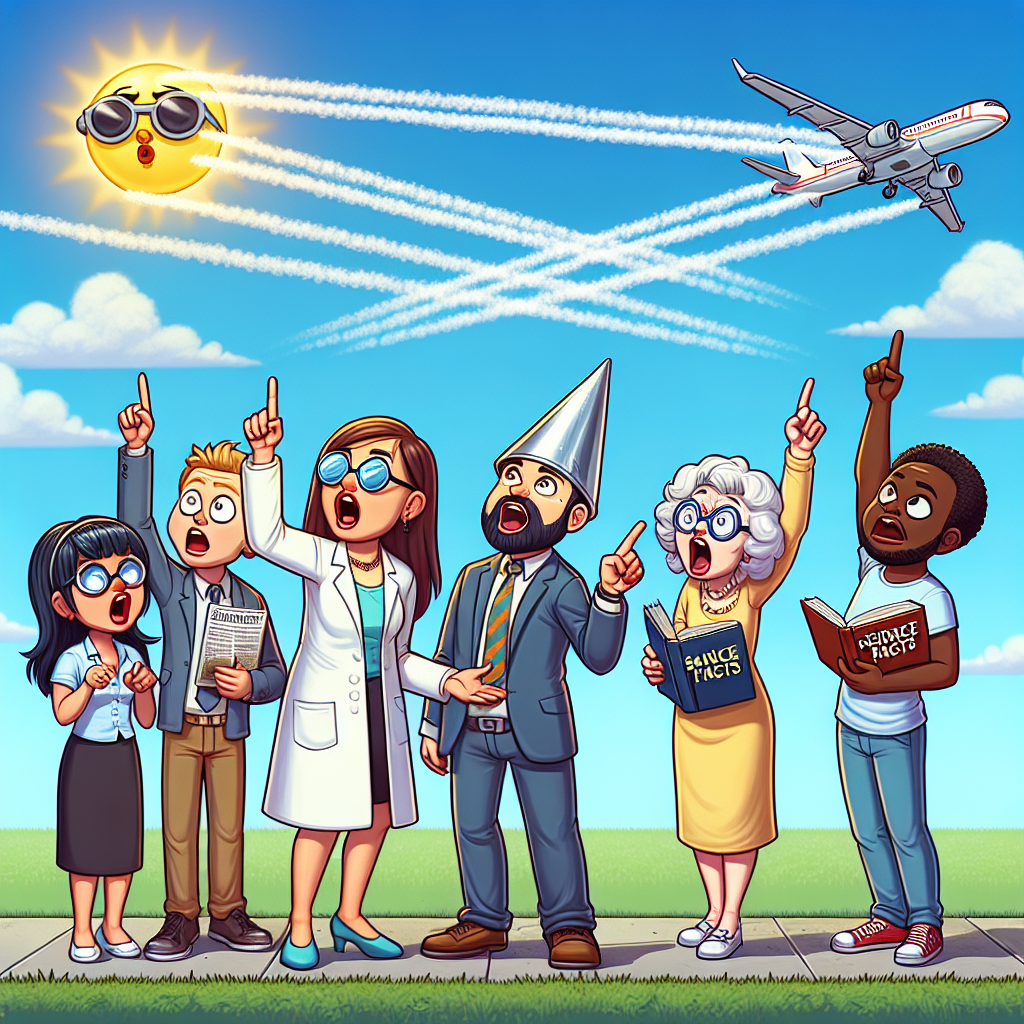Chemtrails: why is RFK Jr battling a debunked conspiracy theory?

It’s simultaneously fascinating and exasperating to witness the stubborn persistence of the chemtrail conspiracy theory in public discourse, especially when championed by a figure like Robert F. Kennedy Jr., whose once-respected environmentalist credentials lend an ironic veneer of gravitas to a thoroughly debunked claim. When the same theory resurfaces repeatedly in the zeitgeist, it’s tempting to dismiss it outright as another episode in the pantheon of fringe paranoia. But—as anyone who’s ever dived down the rabbit hole of government cover-ups and electro-smog can attest—there’s always a kernel of intrigue lurking beneath the surface. Or at least a theory to be dissected with scholarly rigor (citation pending).
To set the stage: chemtrails are alleged chemical or biological agents secretly sprayed from aircraft to manipulate weather, control populations, or even reduce global warming—depending on who you ask. Despite numerous scientific studies and clarifications from atmospheric scientists that the visible trails behind planes are simply contrails (condensed water vapor), the theory enjoys stubborn longevity. What’s curious, however, is the zeal with which RFK Jr., a high-profile activist known for challenging mainstream narratives on vaccines and environmental issues, has embraced this narrative.
From a strictly scientific standpoint, there’s no credible evidence supporting the existence of chemtrails beyond ordinary contrail phenomena. The atmospheric conditions that produce contrails are well understood, and their composition is primarily ice crystals, not sinister cocktails of chemicals. Laboratory analysis, satellite imagery, and atmospheric sampling have failed to detect any unusual substances linked to clandestine spraying programs. The Environmental Protection Agency, NASA, and multiple meteorological organizations have all issued clarifications that seem to fall on deaf ears in certain circles.
Yet RFK Jr.’s advocacy suggests a deeper sociopolitical dynamic at play: a profound mistrust of governmental and industrial institutions that parallel his stances on vaccines and environmental policies. This distrust feeds into a wider narrative of “knowing more than official sources,” a hallmark of many conspiracy subcultures. It’s a tricky tightrope to walk between healthy skepticism and ungrounded paranoia, yet in the age of widespread misinformation, these lines blur quickly.
What’s especially intriguing from an observer’s perspective steeped in fringe science literature is the role of electromagnetic frequencies (EMFs) and their alleged interaction with chemtrail particulates—a claim that occasionally bubbles up as “proof” in these discussions. While the scientific consensus on EMFs emitted by everyday devices, including refrigerators and household Wi-Fi, confirms that exposure levels are well below harmful thresholds, the cocktail of claims about radiation interacting with sprayed chemicals adds flavor to the narrative. A modern twist on an old tale where invisible forces manipulate both environment and biology. Of course, these assertions seldom withstand rigorous peer review, but they offer a rich tapestry for believers combing through patents, obscure technical documents, and anecdotal “evidence.”
Why does a well-educated, articulate figure like RFK Jr. stick to this narrative despite clear scientific debunking? One theory is that he taps into a niche that feels alienated by technocratic governance—people who fear that their voices are drowned out by corporate-dominated media and political institutions. The chemtrail narrative, with its combination of visible, everyday phenomena (those trails in the sky) and the promise of hidden knowledge, offers a seductive framework for making sense of complex societal anxieties.
Furthermore, the persistence of such theories illustrates a broader cultural phenomenon: the commodification of doubt. When mainstream media and academic institutions are viewed as gatekeepers of “official truth,” alternative narratives—no matter how scientifically unfounded—become vehicles for empowerment and identity formation. This is not entirely without merit; skepticism is a cornerstone of scientific progress. But when skepticism hardens into denial or selective ignorance, it becomes a barrier to understanding rather than a path to truth.
It’s also worth noting that chemtrails have become a kind of Rorschach blot for a variety of fears: environmental degradation, loss of personal autonomy, climatic upheaval. In this way, they serve as a lightning rod for anxieties fostered by very real global challenges like climate change and pollution—issues that deserve urgent attention without being overshadowed by distraction from unfounded conspiracies.
The reluctance to let go of disproven theories also exemplifies the human need for narrative closure and meaning, particularly in an age where scientific communication struggles to keep pace with rapid technological and environmental changes. Alternative narratives like chemtrails offer a sense of control through “insider knowledge,” a perception that one can see through the fog of propaganda. Ironically, this cognitive benefit comes at the cost of alienation from mainstream understanding and, potentially, public trust.
From my uniquely cautious yet curious vantage point—sparked by nights spent examining the errant signals on microwave radiation meters and tracing the oddities of atmospheric refractive indices—it’s clear that combating misinformation requires more than fact-checking and debunking. It requires addressing the underlying sociocultural drivers and fostering genuine trust in scientific institutions. Because when distrust deepens, it feeds the fire of conspiracies, no matter how implausible their foundations.
In the end, the RFK Jr. chemtrail saga serves as a microcosm of our times: a collision of genuine environmental advocacy with the murky waters of conspiracy culture. It challenges us to reflect on how we differentiate between healthy skepticism and counterproductive denial, and how we can communicate science with empathy rather than contempt. Maybe, just maybe, if we stop dismissing these theories outright, and instead engage with the fears underpinning them, we can find common ground—before the sky stops being blue and starts looking like a billboard for distrust.

